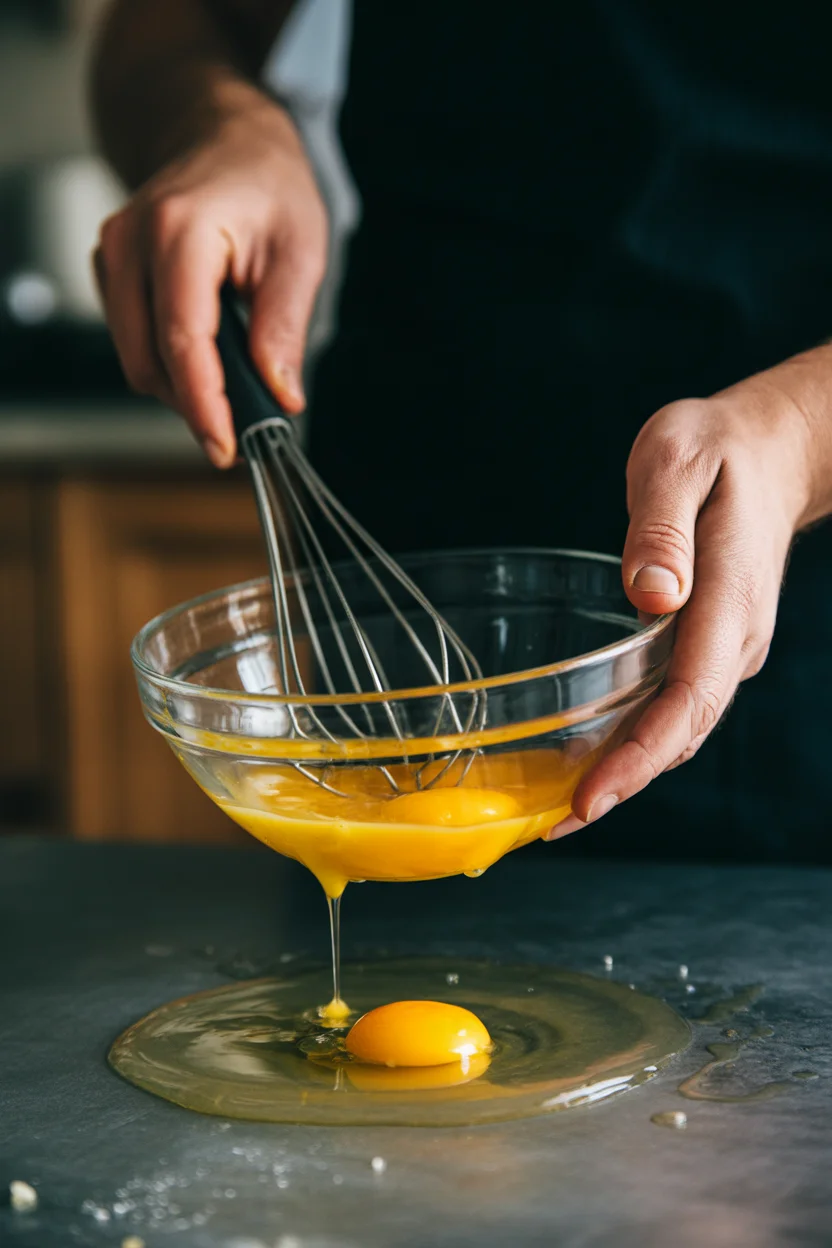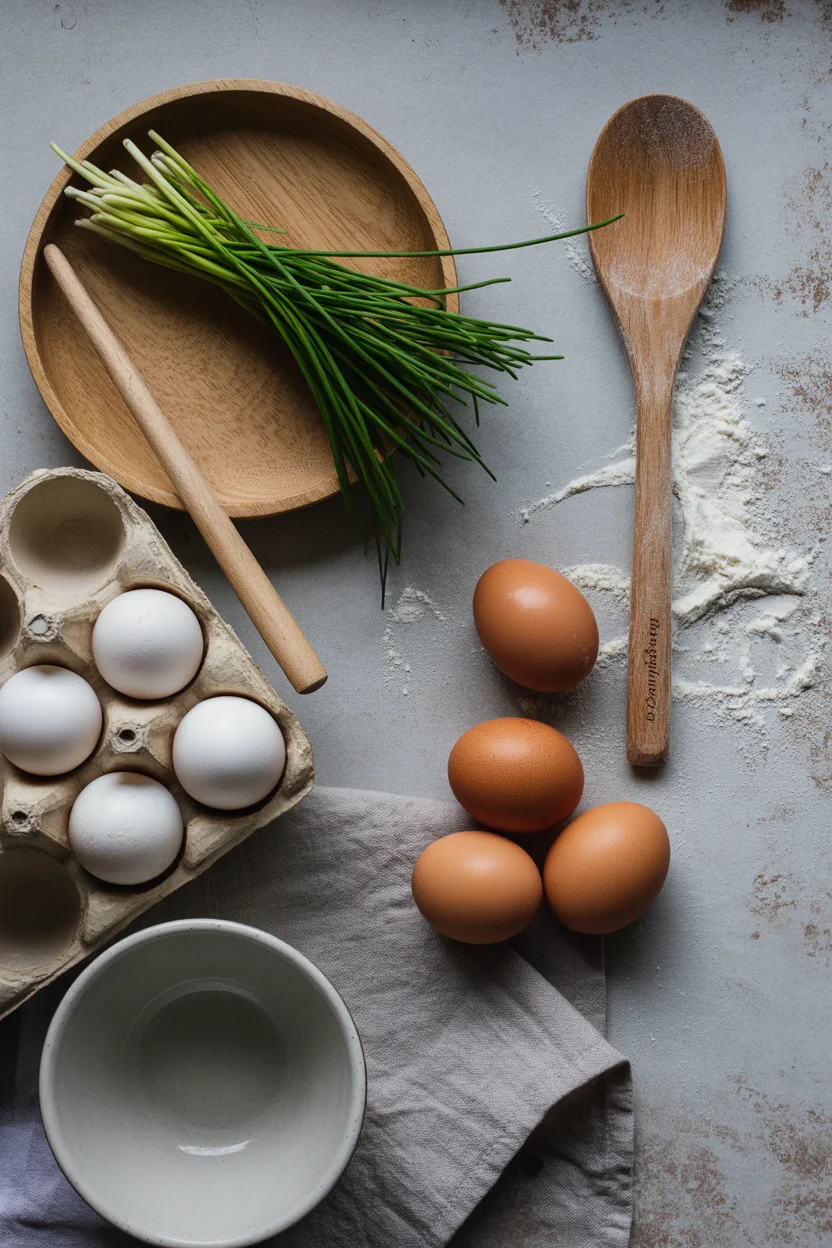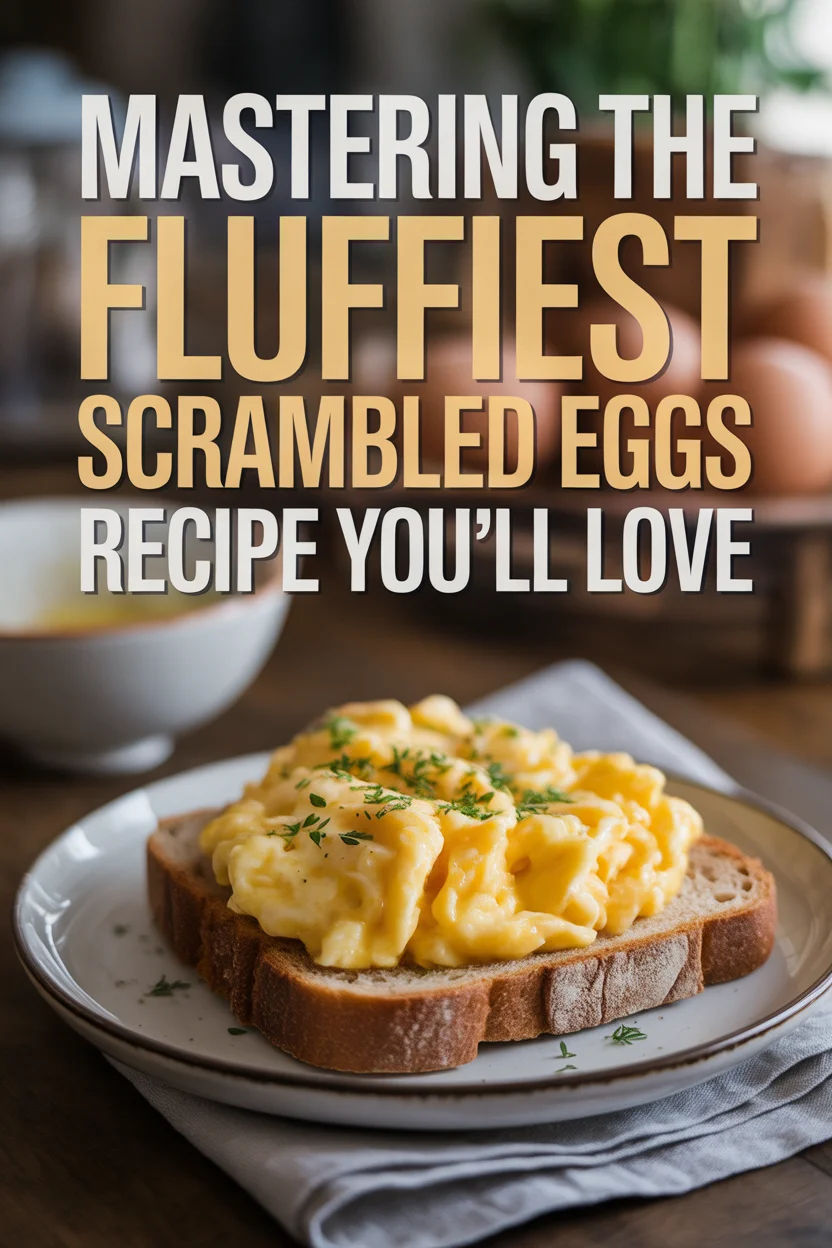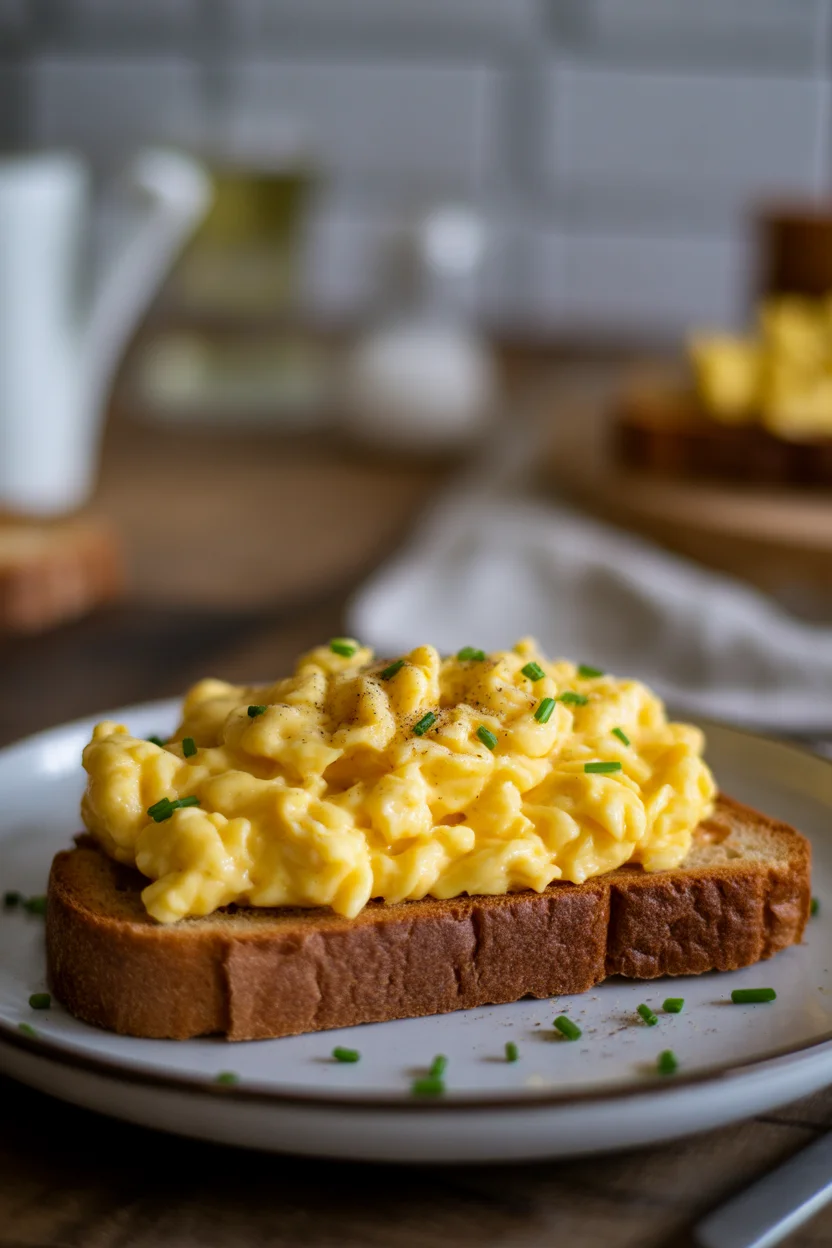Scrambled Eggs Recipe disasters? Oh, I get it. You’ve tried making a breakfast that totally flopped, right? I’ve had a few shells-in-the-bowl moments myself, trust me. Let’s make it painless and, honestly, a reason to be a morning person. If you like your mornings extra smooth, you can always pair your eggs with a mug from these 10 best homemade coffee recipes to try this week or maybe add some healthy freshness with these 5-minute smoothie prep packs high protein recipes. Sound good? Let’s crack into what’s actually (surprisingly) easy.
Tips for Fluffy Scrambled Eggs
Okay, here’s where people fuss too much. You can get fluffy scrambled eggs if you keep it simple. First off, use fresh eggs. Old eggs? The texture just isn’t there. Whisk like you mean it. Not a wimpy two-second swirl, but a proper whoosh—get a little vigor going. Room temp eggs work better, strange but true.
Here’s my opinion (for what it’s worth): don’t skip the bit of milk or cream. Just a splash! Water can work. Milk gives them that five-star-restaurant texture. Cook LOW and SLOW. Slap-bang-high heat turns them rubbery in seconds. Been there. Regret it every time. And a nonstick pan? Absolute game changer for easy cleanup.
And maybe this feels like a “duh,” but stir your eggs gently once in the pan. I use a rubber spatula (just feels right). Gentle swirls, no aggressive poking. Tiny curds are fluffier. That’s it!
“I’ve used this method for months now! Never thought my scrambled eggs could look legit cafe-style, but here I am. Soft, fluffy and NOT dry. So grateful.” — Clare, Toronto

How to Dress Up Your Scrambled Eggs
Let’s be honest, scrambled eggs can look sad on their own. I love throwing in flavor—sometimes just for kicks, sometimes for an actual meal. If you wanna jazz things up, you’ve got options.
Herbs are my go-to. Chives, parsley, or even a sprinkle of dill. They just make the eggs pop. Leftover cheese? Gruyere or crumbled feta is killer. And let’s not forget a spicy shake of hot sauce or smoked paprika right on top. Sometimes I’ll chop up last night’s veggies (peppers, spinach, whatever’s in the fridge). Toss those in. You could also add cooked bacon or bits of ham just before your eggs set if you want a breakfast that means business.
Now get creative. Toast up something fancy. Actually, that cheeseburger garlic bread recipe is a wild way to serve eggs on top—don’t knock it till you try it. Really, sky’s the limit!

French-Style Eggs vs. Fluffy Large-Curd Eggs
Alright, here’s a quick un-fancy breakdown cause folks confuse these all the time. French-style scrambled eggs? They’re creamy. Odd, almost custard-like, mainly ‘cause they’re cooked super slow and stirred often. Pretty indulgent, though takes a few more minutes.
Fluffy large-curd eggs? That’s your classic diner-style—light, golden, a little bouncy when you bite. With those, you beat the eggs well, add a splash of milk or cream, and gently stir over medium heat until they’re set but not… dry shoe-leather. Basically, French-style is for when you feel fancy, large-curd for nostalgia or big appetites.
If I had to pick, I’m usually on Team Fluffy, but if you’ve never tried the French thing, it’s worth a slow Sunday test drive. You’ll feel a bit like you’re in Paris, minus the fancy hat.
The Best Pan for Scrambled Eggs
Alright, don’t groan—I’m about to defend the nonstick pan with my soul here. A small, nonstick skillet (have to say it twice because old pans just don’t cut it) makes scrambled eggs so much easier. You don’t want huge or super deep, just something that lets you move eggs around without them sticking and burning.
Stainless? Eh… you’ll need a mountain of butter, and even then it’s a gamble. Cast iron’s great for lots of stuff, but not for easy, fluffy scrambled eggs—it tends to hold too much heat. Tried plenty of pans (family hand-me-downs, store-brand deals, all of it). Nonstick is the only one I keep coming back to—for eggs, anyway.
A soft spatula is a must too, trust me!
Mix-Ins and When to Add Them
This one trips people up! Timing actually matters for good scrambled eggs. If you add raw veggies (like mushrooms or onions) at the start, they might make your eggs watery. I like to cook mix-ins separately—really. Quick fry in the pan, then set aside.
Once your eggs start to set, THAT’S when to gently add the cooked fillings. Makes it all blend better. Cheese melts best if you stir it in right at the end. If you get the timing wrong, eggs get weirdly clumpy or the cheese just vanishes.
So here’s the big tip: treat your eggs like the main event, and let the add-ins scoot in as guests just before the party’s over.
Serving Suggestions
Here’s how I serve scrambled eggs in a way that makes even boring weekday breakfasts feel special:
- Pile on crusty toasted sourdough, drizzle with olive oil.
- Top with a handful of chopped arugula and a dusting of parmesan.
- Pair with slices of avocado (plus a squeeze of lemon!).
- Serve next to a fresh fruit bowl or a cup from these delicious green smoothie bowl recipes fresh start.
Honestly, scrambled eggs fit almost any plate. Get creative and see what sticks.
Common Questions
Do I really need to add milk or cream?
Nope, but honestly, it helps make your scrambled eggs more tender. Water is fine, but milk gives that creamy vibe.
Why do my scrambled eggs look gray?
That’s usually from cooking high and fast or using a metal pan. Keep it gentle with heat and use a nonstick skillet.
Do you salt eggs before or after cooking?
Salt before. Mix it in with the eggs so it spreads out more evenly. Salting after tastes weird and uneven.
Can I meal-prep scrambled eggs?
Sorta. They’re best fresh, but you can reheat on low with a splash of water or milk to help revive ‘em.
Are scrambled eggs healthy?
Totally depends what you put in them! Eggs are full of protein, and if you pile on spinach, herbs, or a few good mix-ins, you’re golden.
Let’s Get Scrambling!
So there you go—my not-so-secret scrambled eggs recipe and every trick I’ve actually tested in my home kitchen. Give them a try, maybe with your go-to cold brew or some inspiration from this easy turmeric hack recipe if you’re up for something a little different. For even more inspiration, you can check out this How to Make Scrambled Eggs Recipe – Love and Lemons guide too, or see what flavors pop for you. All in all, don’t overthink it… and don’t be scared of making a mess at least once. Let those fluffy eggs make your breakfast shine!

Fluffy Scrambled Eggs
A simple yet effective recipe for making fluffy scrambled eggs that are tender and delicious.
- Prep Time: 5 minutes
- Cook Time: 10 minutes
- Total Time: 15 minutes
- Yield: 2 servings 1x
- Category: Breakfast
- Method: Stovetop
- Cuisine: American
- Diet: Gluten-Free
Ingredients
- 4 large eggs
- 2 tablespoons milk or cream
- Salt, to taste
- Fresh herbs (chives, parsley), optional
- Cheese (Gruyere, feta), optional
- Cooked bacon or ham, optional
- Butter or oil, for cooking
Instructions
- Whisk the eggs vigorously with milk and salt until well combined.
- Heat a small nonstick skillet over low heat and add butter or oil.
- Pour in the egg mixture and let it sit for a few moments until it just starts to set.
- Gently stir the eggs with a rubber spatula, forming soft curds.
- Add in any cooked mix-ins (like veggies or cheese) just before the eggs are fully set.
- Remove from heat and serve immediately on toasted sourdough, topped with herbs or avocado, if desired.
Notes
For best results, use fresh eggs and keep the heat low to achieve that fluffy texture. Don’t forget to season the eggs with salt before cooking.
Nutrition
- Serving Size: 1 serving
- Calories: 220
- Sugar: 1g
- Sodium: 300mg
- Fat: 16g
- Saturated Fat: 6g
- Unsaturated Fat: 10g
- Trans Fat: 0g
- Carbohydrates: 2g
- Fiber: 0g
- Protein: 14g
- Cholesterol: 370mg
Keywords: scrambled eggs, breakfast, fluffy eggs


